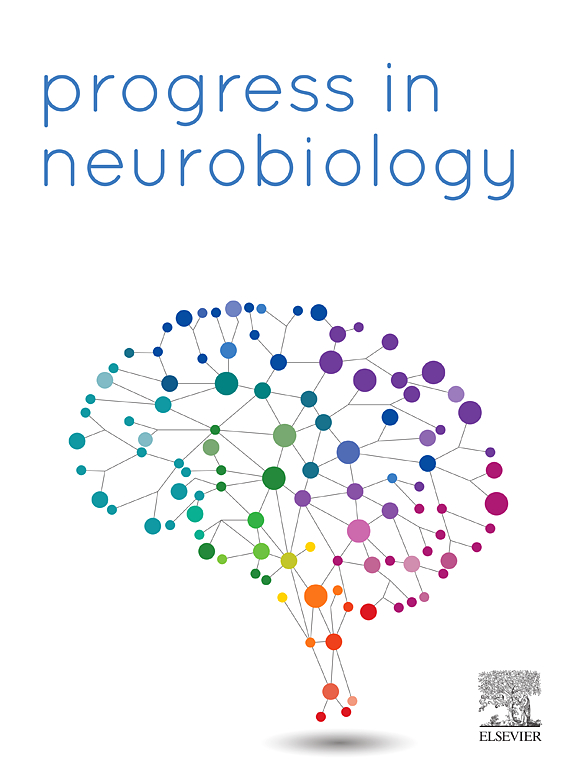由突触和体积传递介导的癫痫中神经元网络的致命相互作用表明了预防的方法
IF 6.1
2区 医学
Q1 NEUROSCIENCES
引用次数: 0
摘要
神经网络的相互作用在正常的大脑生理和大脑疾病中都很重要。许多中观神经网络,包括听觉和呼吸神经网络,介导单一的大脑功能。包括运动网络、中枢自主神经网络(CAN)和许多癫痫网络在内的宏观网络涉及多个中观网络之间的相互作用。网络相互作用是由神经活性物质介导的,通过突触传递作用,突触传递介导网络之间的快速相互作用。较慢但至关重要的网络相互作用是由体积传输介导的。神经活性物质介导的神经网络间相互作用的改变可以显著改变神经网络的功能和相互作用。声惊反应涉及听觉和运动网络之间的相互作用,也包括参与许多不同网络的脑干网状形成(BRF)核。在恐惧增强的惊吓范式中,这个网络与杏仁核积极互动,由条件反射引起。癫痫发作网络可以与呼吸网络负向相互作用,这在癫痫猝死(SUDEP)中是致命的,这是癫痫发作网络的一个悲剧性突发特性。表现出听源性癫痫(AGSz)的SUDEP模型涉及听觉和运动网络与BRF核之间的相互作用。在DBA/1小鼠SUDEP模型中,AGSz网络与呼吸网络负相互作用,导致正性呼吸暂停。呼吸暂停是致命的,除非CAN能够启动自我复苏。这些网络相互作用包括由GABA和谷氨酸介导的突触传递和由腺苷、二氧化碳和血清素介导的体积传递。改变这些相互作用机制可以预防猝死。这些癫痫网络相互作用说明了神经元网络之间可能发生的复杂机制。本文章由计算机程序翻译,如有差异,请以英文原文为准。
Lethal Interactions of neuronal networks in epilepsy mediated by both synaptic and volume transmission indicate approaches to prevention
Neuronal network interactions are important in normal brain physiology and also in brain disorders. Many mesoscopic networks, including the auditory and respiratory network, mediate a single brain function. Macroscopic networks, including the locomotor network, central autonomic network (CAN), and many seizure networks involve interactions among multiple mesoscopic networks. Network interactions are mediated by neuroactive substances, acting via synaptic transmission, which mediate rapid interactions between networks. Slower, but vitally important network interactions, are mediated by volume transmission. Changes in the interactions between networks, mediated by neuroactive substances, can significantly alter network function and interactions. The acoustic startle response involves interactions between auditory and locomotor networks, and also includes brainstem reticular formation (BRF) nuclei, which participate in many different networks. In the fear-potentiated startle paradigm this network interacts positively with the amygdala, induced by conditioning. Seizure networks can interact negatively with the respiratory network, which becomes lethal in sudden unexpected death in epilepsy (SUDEP), a tragic emergent property of the seizure network. SUDEP models that exhibit audiogenic seizures (AGSz) involve interactions between the auditory and locomotor networks with BRF nuclei. In the DBA/1 mouse SUDEP model the AGSz network interacts negatively with the respiratory network, resulting in postictal apnea. The apnea is lethal unless the CAN is able to initiate autoresuscitation. These network interactions involve synaptic transmission, mediated by GABA and glutamate and volume transmission mediated by adenosine, CO2 and serotonin. Altering these interaction mechanisms may prevent SUDEP. These epilepsy network interactions illustrate the complex mechanisms that can occur among neuronal networks.
求助全文
通过发布文献求助,成功后即可免费获取论文全文。
去求助
来源期刊

Progress in Neurobiology
医学-神经科学
CiteScore
12.80
自引率
1.50%
发文量
107
审稿时长
33 days
期刊介绍:
Progress in Neurobiology is an international journal that publishes groundbreaking original research, comprehensive review articles and opinion pieces written by leading researchers. The journal welcomes contributions from the broad field of neuroscience that apply neurophysiological, biochemical, pharmacological, molecular biological, anatomical, computational and behavioral analyses to problems of molecular, cellular, developmental, systems, and clinical neuroscience.
 求助内容:
求助内容: 应助结果提醒方式:
应助结果提醒方式:


